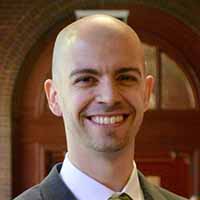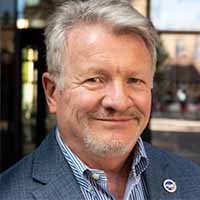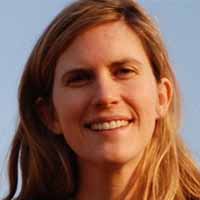
This event is sponsored by the SETI Institute and Georgetown University Earth Commons
Earth at the Crossroads II: A Cosmic Perspective on Environmental Crisis
April 17-19, 2024
Georgetown University, Washington, D.C.
VIEW CAMPUS MAP
Leveraging the foundation laid by the first “Earth at the Crossroads” event in 2021, the forthcoming 2024 iteration seeks to deepen and enrich its discussions, establishing itself as a pivotal gathering at the nexus of science, philosophy, and global environmental guardianship. This event, a joint effort by the SETI Institute and Georgetown University, acknowledges our world’s complex challenges—from the quest for extraterrestrial life to tackling the urgent climate issues confronting our planet. “Earth at the Crossroads 2.0” is set to ignite an inclusive conversation among diverse global voices.
The 2024 agenda is poised to explore the ramifications of recent space explorations, particularly the discovery of exoplanets in habitable zones, and how these findings influence our perceptions of life’s durability and scarcity. The conference will bring together a multidisciplinary panel of experts, including astrobiologists, climate scientists, ethicists, and technologists, to discuss the convergence of extraterrestrial research and Earth’s sustainability efforts.
Addressing the persistent environmental crises, “Earth at the Crossroads 2.0” will highlight innovative solutions, from cutting-edge eco-friendly technologies and conservation methods to policy initiatives to reduce climate change impacts, biodiversity loss, and environmental harm. Through workshops and collaborative activities, participants will be encouraged to engage directly with these issues, promoting a collective sense of responsibility and fostering a global community committed to environmental stewardship and exploration.
The first Earth at the Crossroads event was in 2021 and was virtual. Earth at the Crossroads II is a follow on to the first event.
To see video of the discussions from 2021: https://www.seti.org/earth-crossroads-can-study-other-worlds-help-us-save-one.
The Earth at the Crossroads steering committee includes:




Earth at the Crossroads will feature live performances and an art exhibition showcasing recent work by members of the SETI AIR Program. Highlights include a concert by Felipe Perez Santiago, a DJ set by Daedelus, and visual art by Xin Liu, Charles Lindsay, Bettina Forget, Scott Kildall, and Jonathon Keats.
Speakers will include:
Dale Andersen (SETI Institute)
Ross Andersen (The Atlantic)
Cristina Arista
Tripti Bhattacharya (Syracuse University)
Penny Boston (NASA Ames Research Center)
David Brin (Science Fiction author)
Morgan Cable (JPL)
Nathalie Cabrol (SETI Institute)
Sophia Chang (Georgetown University)
Owen Chbani (Georgetown University)
Lu Chou (NASA)
Ann Marie Cody (SETI Institute)
Br. Guy Consolmagno (Vatican Observatory)
Alfred Darlington (SETI AIR)
Dagomar Degroot (Georgetown University)
Bill Diamond (SETI Institute)
Nadia Drake
Rob Dunn (NC State)
Erle Ellis (University of Maryland)
Bettina Forget (SETI AIR)
Abby Fraeman (NASA JPL)
David Grinspoon (NASA HQ)
Victoria Herrmann (Arctic Institute)
Chris House (Penn State)
Zach John (Georgetown University)
Sarah Johnson (Georgetown University)
Jonathon Keats (SETI AIR)
Ravi Kopparapu (NASA)
Marshall Ledford (University of Arizona)
Megan Lickley (Georgetown University)
Carlos Lozada (New York Times)
Clara Ma (MIT)
John McNeill (Georgetown University)
Felipe Perez Santiago (SETI AIR)
Betsy Pugel (NASA)
Nick Pyenson (Smithsonian)
Andy Spry (SETI Institute)
Ellen Stofan (Smithsonian)
Melissa Trainer (NASA)
Lara Vimercati (Natural History Museum)
Maggie Weng (Georgetown University)
Jonathan Wiener (Duke)
Michael Wong (Carnegie)
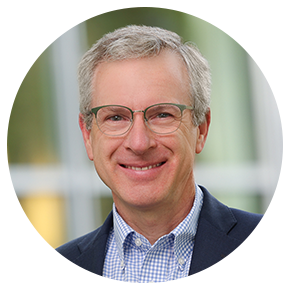
Jonathan B. Wiener is the William R. Perkins Professor of Law, and Professor of Environmental Policy and Public Policy, at Duke University, where he co-directs the Duke Center on Risk in the Science & Society Initiative He is a University Fellow of Resources for the Future (RFF), and a Past President of the Society for Risk Analysis (SRA). His publications include the books: Policy Shock: Recalibrating Risk and Regulation after … Crises (Cambridge Univ. Press, 2017, with Ed Balleisen, Lori Bennear, and Kim Krawiec); The Reality of Precaution: Comparing Risk Regulation in the United States and Europe (RFF/Routledge, 2011, with Michael Rogers, Jim Hammitt, and Peter Sand); Reconstructing Climate Policy (AEI Press 2003, with Richard Stewart); and Risk vs. Risk (Harvard Univ. Press 1995, with John Graham). He was a co-author of the Intergovernmental Panel on Climate Change (IPCC), 5th Assessment Report (2014), Working Group III, chapter 13 on “International Cooperation: Agreements and Institutions.” Before coming to Duke, he served in the US Government, at the Department of Justice (DOJ), the White House Office of Science & Technology Policy (OSTP), and the White House Council of Economic Advisers (CEA). In these roles, he helped negotiate the Framework Convention on Climate Change (FCCC), attended the Rio Earth Summit (1992), helped draft Executive Order 12866 (1993), and helped launch the Americorps National Service program (1993). He was a law clerk for then-Judge Stephen G. Breyer on the US Court of Appeals in Boston, and for Judge Jack B. Weinstein on the US District Court in New York. He received degrees in economics and in law from Harvard University.

Photo by Jim Preston, Smithsonian’s National Air and Space Museum.
Dr. Ellen Stofan is the Under Secretary for Science and Research at the Smithsonian Institution. She oversees the science museums and science research centers as well as the Smithsonian Libraries and Archives, Office of International Relations, Smithsonian Scholarly Press and Scientific Diving Program. Her focus is on the Smithsonian’s Our Shared Future: Life on a Sustainable Planet initiative and collective research, especially in areas of biodiversity, climate change, global heath, sustainable communities, and environmental justice.
Stofan previously was the John and Adrienne Mars Director of the Smithsonian’s National Air and Space Museum. As the former Chief Scientist of NASA, Stofan served as the principal advisor to the Administrator on science programs and strategic planning. Currently, she is on the science team of the NASA Dragonfly mission to Titan.
Stofan holds master’s and doctorate degrees in geological sciences from Brown University, and a bachelor’s degree from the College of William & Mary.
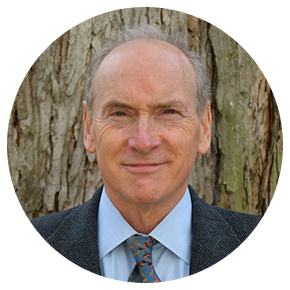
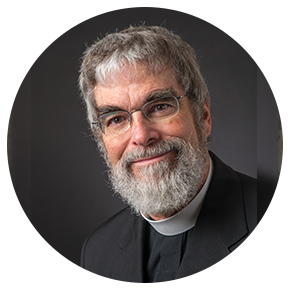
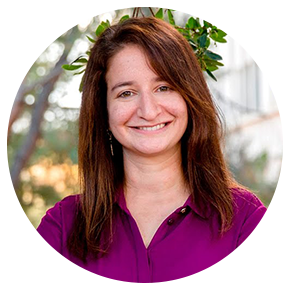
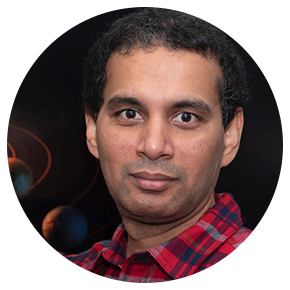
Dr. Ravi Kopparapu is a planetary scientist at NASA’s Goddard Space Flight Center and a lead for the Sellers Exoplanet Environments Collaboration. He is renowned for his research on exoplanets, focusing particularly on the search for habitable environments and technological life on worlds orbiting other stars. Dr. Kopparapu frequently contributes to communicating the status of the search for life to a broader audience through his writings in media. In recognition of his contributions, he was awarded NASA’s Exceptional Scientific Achievement Medal in 2020.
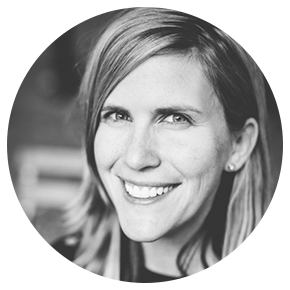
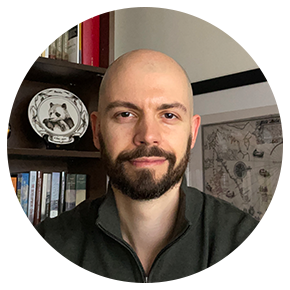
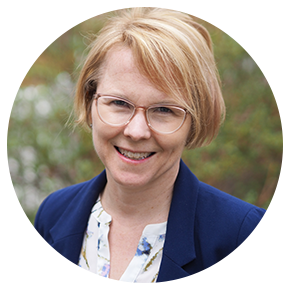
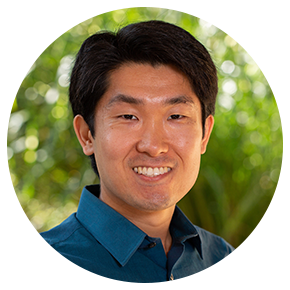
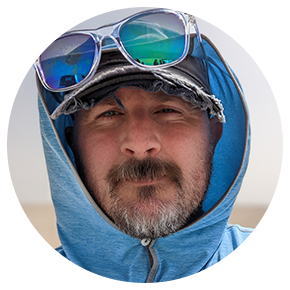
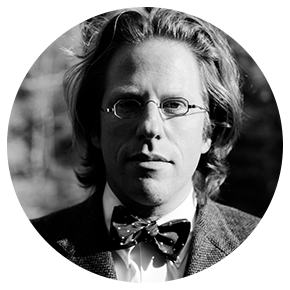
Photo by Jen Dessinger
He has exhibited and lectured at dozens of institutions worldwide, from the Los Angeles County Museum of Art to Stanford University to the Triennale di Milano, and from SXSW to CERN to UNESCO. He is the author of six books on subjects ranging from science and technology to art and design – most recently You Belong to the Universe: Buckminster Fuller and the Future, published by Oxford University Press – and is the author of an online art column for Forbes.
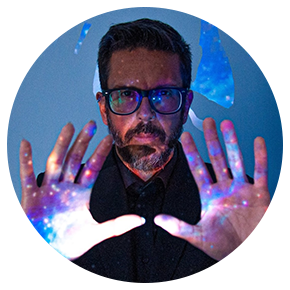

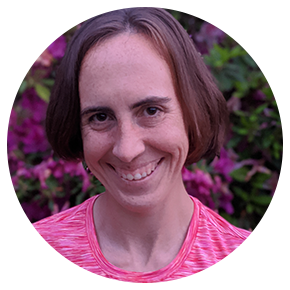

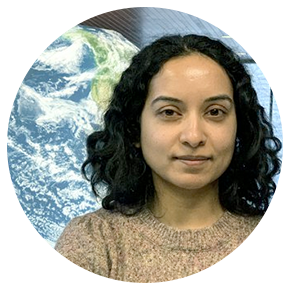
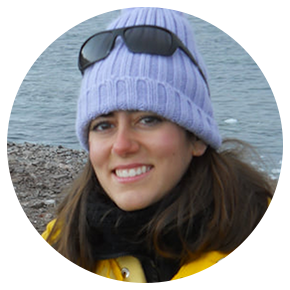

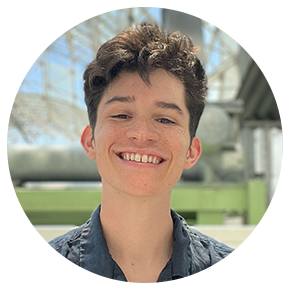
Marshall Ledford is a Genetics and Astrobiology PhD Candidate in the Meredith Lab at the University of Arizona. His previous work has involved analyzing bacterial DNA from the International Space Station, helping design planetary protection mission concepts, and advocating to congress for increased NASA funding for students. Now, his PhD is focused on understanding how microorganisms influence their environment through trace gas metabolism, with an emphasis on desert, polar, and early Earth ecosystems.
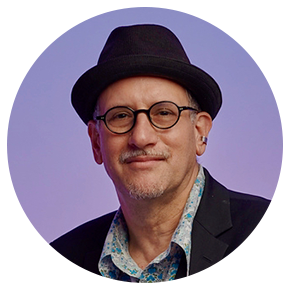


At Georgetown, Victoria leads a National Science Foundation funded Research Coordination Network on Arctic migrations. A recognized expert in Arctic climate policy, Victoria has testified before the US House and Senate, served as the Alaska Review Editor for the National Climate Assessment, and was named as one of the ‘World’s 100 Most Influential People in Climate Policy’ by Apolitical. She has previously served as the President and Managing Director of The Arctic Institute from 2016 to 2021, a White House Fellow, a Fulbright awardee to Canada, a Carnegie Endowment Junior Fellow, and a Gates Scholar at the University of Cambridge, where she received her PhD.
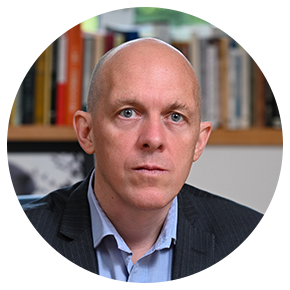

Nadia Drake is a freelance science journalist and former contributing writer at National Geographic. She specializes in covering astronomy, astrophysics and planetary science, as well as anything involving jungles and spiders. Her byline has also appeared in The New York Times, The Atlantic, Scientific American, Nature, Wired, and Science News; and she was the interim physics editor at Quanta magazine. Nadia frequently hits the road in search of stories and has reported from the jungles of Peru and Indonesian Borneo, the Arctic Ocean, Mars-on-Earth, a flying telescope, the deserts of the Middle East, and the slumping glaciers at Mt. Kilimanjaro’s summit. Nadia has a PhD in genetics from Cornell University, and a graduate certificate in science communication from the University of California, Santa Cruz.
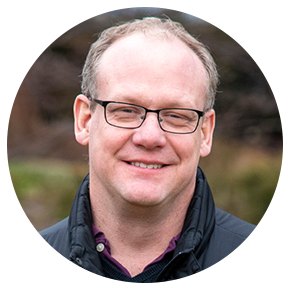
Christopher H. House is a Professor of Geosciences at Penn State, who studies the origin and early evolution of microbial life and the geochemical signatures of such life. He currently is the Director of the Penn State Consortium for Planetary and Exoplanetary Science and Technology and leads the NASA Pennsylvania Space Grant Consortium. Dr. House has research expertise with prebiotic chemistry, microbial evolution, and the carbon isotopic composition of microbial cells. Originally from California, as an undergraduate at UCSD, he spent two years in the origin of life chemistry laboratory of Dr. Stanley L. Miller. Then, Dr. House received his PhD at UCLA with Dr. J. W. Schopf as his advisor. For his graduate work, he studied the carbon isotopic fractionation by various prokaryotes and the composition of the microfossils. During the last 24 years at Penn State, Dr. House has been a participant in four major ocean research cruises and is currently a member of the NASA Mars Science Laboratory Science Team.

Dr. Morgan Cable is a Research Scientist in the Planetary Science Section at the NASA Jet Propulsion Laboratory in Pasadena, CA. She is currently the Science Lead for the Exobiology Extant Life Surveyor (EELS) concept and Co-Deputy PI of the Planetary Instrument for X-ray Lithochemistry (PIXL) Instrument aboard the Mars 2020 (Perseverance) rover. She has worked on the Cassini Mission, is a Co-Investigator of the Dragonfly mission to Titan, and is serving multiple roles on Europa Clipper. She was recently appointed as a CIFAR Fellow for the Earth 4D: Subsurface Science and Exploration Program. She previously served as the Ocean Worlds Program Area Scientist for the Planetary Mission Formulation Office, and as supervisor of the Astrobiology and Ocean Worlds Group. Morgan’s research focuses on organic and biomarker detection, through both in situ and remote sensing techniques. She has designed receptor sites for the detection of bacterial spores, the toughest form of life, and developed novel protocols to analyze organic molecules using small, portable microfluidic sensors. Currently Dr. Cable performs laboratory experiments to study the unique organic chemistry of Titan. She and colleagues were the first to discover minerals made exclusively of organics that may exist on Titan’s surface. Morgan also conducts fieldwork in extreme environments on Earth, searching for life in places such as the Atacama Desert, ice fields at the summit of Mt. Kilimanjaro, nutrient-limited lakes at the base of Wind Cave (the densest cave system in the world) in South Dakota, fumarole-generated ice caves of the Mount Meager Volcano in Canada, and lava fields of Iceland.

Erle Ellis is Professor of Geography and Environmental Systems at the University of Maryland, Baltimore County (UMBC). A Global Highly Cited Researcher, he studies the ecology of human landscapes to inform sustainable stewardship of the biosphere. He teaches environmental science and landscape ecology, which he has also taught at Harvard’s Graduate School of Design. He is a Visiting Fellow at Oxford’s Martin School, Lead Author of the IPBES Transformative Change Assessment, Fellow of the Global Land Programme, Senior Fellow of the Breakthrough Institute, and former member of the Anthropocene Working Group. His book, Anthropocene: A Very Short Introduction, was published in 2018.

Clara Ma is a dual Master’s student at MIT in the Technology Policy Program and Aeronautics and Astronautics departments. Her research involves forecasting the growth of the commercial launch industry in the coming decades, and simulating the resulting emissions and their impacts on atmospheric chemistry using the global atmospheric chemistry model, GEOS-Chem. Clara formerly interned with the FAA’s Office of Commercial Space Transportation, which licenses commercial launches, NASA HQ, and Virgin Galactic. Clara is an alum of Georgetown, a Science, Technology, and International Affairs major, and former President of the Astronomical Society.
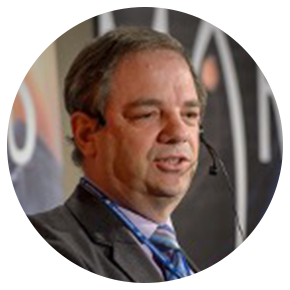
With formal training in life sciences and business, Dr. Andy Spry is the only person to have ever held technical management roles in planetary protection in both Europe and the USA. Following early-career commercial experience in the diagnostics and medical device sterilization industries, Dr Spry has spent 20+ years executing the management of spacecraft cleanliness for planetary protection purposes, including 10 years at NASA’s Jet Propulsion Laboratory, where he led the Biotechnology & Planetary Protection Group.
For the last 9 years, Dr Spry has been a planetary protection consultant to NASA, employed by the SETI Institute, with responsibility for providing support to NASA’s Office of Planetary Protection. Currently his activity is focused on policy development, especially for future crewed missions to Mars, but also includes mission responsibilities for e.g., Artemis I and II, and the Artemis I secondary payloads.
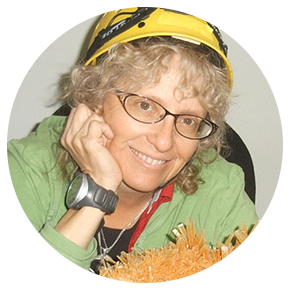
Dr. Penelope Boston is currently Portfolio Scientist for New Business and Employee Development (Code S, Science) at NASA Ames Research Center, in the Silicon Valley area of California working to develop research and future mission concepts. She formerly served as Director of the NASA Astrobiology Institute (2016-2020). Boston was Professor and Department Chair of the Earth and Environmental Sciences Dept. at the New Mexico Institute of Mining and Technology as well as Associate Director of the National Cave and Karst Research Institute (2002-2016).
Personal research areas include geomicrobiology and astrobiology in extreme environments (caves and mines, hot and cold deserts, high latitudes and altitudes); geological processes creating caves on other planets; human life support issues in space/planetary environments; and use of robotics and other technologies to assist exploration and science in extreme Earth and extraterrestrial environments. Boston is author of 250+ technical and popular publications, editor of 4 volumes, and her work has featured in ~300+ print and broadcast media outlets. She has been a NASA Institute for Advanced Concepts Fellow since 2000, received the 2010 Lifetime Achievement Award from the National Speleological Society, the Caving Legend Award from the FSCP/BLM (2012), and is a National Geographic Explorer and Fellow of the California Academy of Sciences. Penny is a poet, artist, animal lover, and friendly.
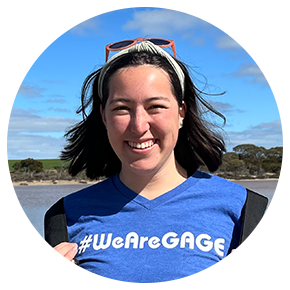
Maggie Weng is a PhD candidate in the Johnson Biosignatures Lab from Los Angeles, California. Before joining the lab, she graduated from Washington University in St. Louis with a degree in environmental earth science and a minor in writing. Her research is focused on understanding the ecology of hypersaline environments. She has conducted fieldwork at sites in Iceland, Chile, San Diego and Western Australia and uses the tools of metagenomics and metatranscriptomics to probe the “uncultivatable majority” of extreme microbes. She is also the current president of Georgetown’s graduate labor union, the Georgetown Alliance of Graduate Employees (GAGE). When not at work, she writes climate fiction: her work has been published on NASA’s website and by The Los Angeles Review.
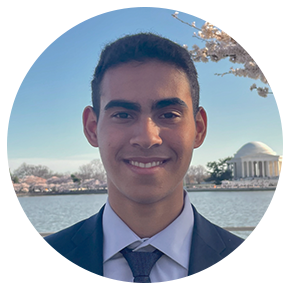
Owen Chbani is a Senior at Georgetown University majoring in Science, Technology, and International Affairs and minoring in Arabic from Miami, Florida. He’s currently a Policy Intern at the Commercial Spaceflight Federation. Last summer, he was a Mars Reconnaissance Team intern at NASA’s Science Mission Directorate and has also interned at Voyager Space and the ODNI. He is interested in the intersection of space policy and national security. In addition to being Co-President of the Georgetown Space Initiative, he is the Vice-President of the Georgetown University Wargaming Society and Vice-President of the Astronomical Society.

Zachariah John is an undergraduate studying Science, Technology, and International Affairs at Georgetown University. He is an astrobiology research assistant for the Johnson Biosignatures Lab, studying microbial communities in Mars-analog subterranean lava tubes. He is also a Space Life Sciences Training Program Intern at NASA Ames Research Center and a former intern at the Mars Reconnaissance Team under the Mars Exploration Program at NASA Headquarters.
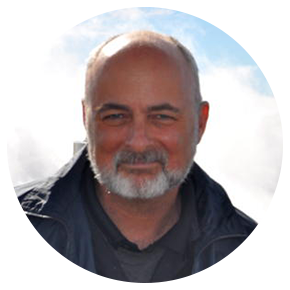
David Brin is a scientist, tech speaker/consultant, and author. His novels about our survival and opportunities in the near future include EARTH and Existence. A film by Kevin Costner was based on The Postman. His 16 novels, including NY Times Bestsellers and Hugo Award winners, have been translated into more than twenty languages. EARTH foreshadowed global warming, cyberwarfare and the world wide web.
Speaking and advising about how science, technology and evolving values will affect our onrushing future, David has keynoted for IBM, Google, Procter & Gamble, SAP, Microsoft, Qualcomm, Price-Waterhouse, the Mauldin Group and Casey Research, all the way to think-tanks, Homeland Security and the CIA.
An advisor to NASA’s Innovative & Advanced Concepts program, David appears frequently on shows such as Nova and The Universe and Life After People. His first non-fiction book — The Transparent Society: Will Technology Make Us Choose Between Freedom and Privacy? — won the Freedom of Speech Award of the American Library Association. His second nonfiction book is VIVID TOMORROWS: Science Fiction and Hollywood (2021). (Website: http://www.davidbrin.com/ )
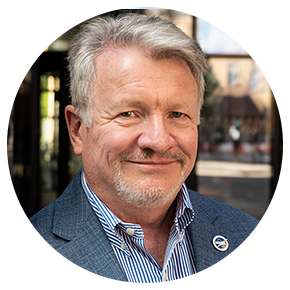
Bill Diamond is President and CEO of the SETI Institute, which he joined in 2015. He has worked predominantly in applied technologies with over 20 years’ experience in photonics and optical communications, and more than a decade in X-ray and semiconductor processing technologies. His corporate background spans the spectrum from venture-backed start-ups to Fortune 100 multinationals, with responsibilities ranging from R&D, engineering and operations, to sales, marketing, product management, and CEO positions.
Most recently, Bill was Vice President of Sales for Oclaro, Inc. where he led the company’s penetration in optical networking of the rapidly evolving Web 2.0 Data Center market. Prior to that, he was Vice President of Product Management for optical amplifiers, ROADM, high bit-rate modules, and micro-optics.
Bill held CEO positions at WaveSplitter Technologies, DenseLight Semiconductor, and Xradia, Inc., now part of Zeiss. His photonics background also includes six years with AT&T Bell Laboratory’s Optoelectronics business unit and he served as President of US operations for the Swiss technology company, Comet A.G.
Bill holds a B.A. in Physics from Holy Cross College and a Master’s in Business Administration from Georgetown University. He is a past member of the Advisory Board for the McDonough School of Business Administration at Georgetown and is a current member of the Optical Society of America and the International Astronomical Congress.


